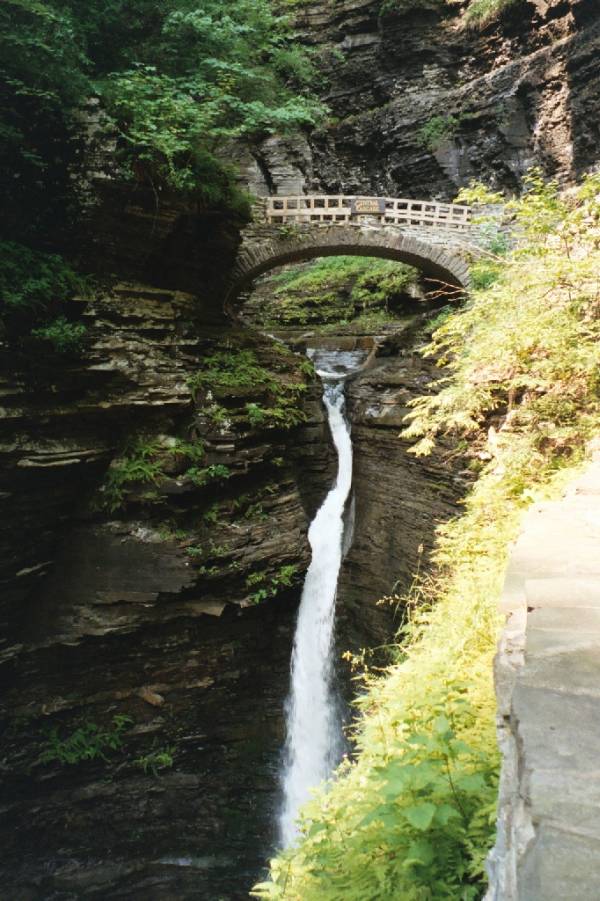Hadid Architects
Bergisel Ski Jump 2002
Photo © Helene Binet
"The Ski Jump is a concise piece of functional design, an instrument for high performance sport, shaped with mathematical precision. The challenge here was to integrate a new, initially alien element into a given formula: The cafŽ and Sundeck. The assemblage of elements was resolved in the manner of nature, developing a seamless hybrid, where parts are smoothly articulated and fused into an organic unity. The result is a rather unusual silhouette on Bergisel."
Zaha Hadid
Zaha Hadid
Photo © Helene Binet
Situated on the Bergisel Mountain overlooking downtown Innsbruck, the ski jump will be a major landmark. It is part of a larger refurbishment project for the Olympic Arena and has replaced the old ski jump, which no longer met with international standards.
Photo © Helene Binet
The building is a hybrid of highly specialized sports facilities and public spaces, including a cafŽ and a viewing terrace. These different programs are combined into a single new shape which extends the topography of the slope into the sky.
At a length of about 90 meters and a height of almost 50 meters the building is a combination of a tower and a bridge. Structurally it is divided into the vertical concrete tower and a spatial green structure, which integrates the ramp and the cafŽ.
Photo © Helene Binet
Two elevators bring visitors to the cafŽ 40 meters over the peak of the Bergisel Mountain. From here they can enjoy the surrounding alpine landscape as well as watch the athletes below fly above the Innsbruck skyline.
Zaha Hadid Architects won the international competition for the ski jump in 1999. The new structure opened in 2002.
Total floor area: 1470 square meter
Built area: 355 square meter
Built area: 355 square meter
Architectural Design: Zaha Hadid
Project Architect: Jan HŸbener
Project Team: Matthias Frei, Cedric Libert, Markus Dochantschi,
Garin O'Aivazian, Jim Heverin, Sylvia Forlati,
Sara Noel Costa de Araujo
Competition Team: Markus Dochantschi, Jan HŸbener, Ed Gaskin,
Eddie Can, Yoash Oster, Stanley Lau, Janne Westermann
Structural Engineer: Christian Aste, Innsbruck
Jane Wernick, London [competition stage]
Project Management: Baumeister Ing. Georg Malojer, Schwaz/Innsbruck
Ski jump technology: BauplanungsbŸro Franz Fuchslueger, Trofaiach
Electrical engineer: TB PŸrcher, Schladming
Services Engineer: TB Schrempf, Schladming
Building Physics: Peter Fiby, Innsbruck
Lighting consultant: Office for Visual Interaction, New York
Project Architect: Jan HŸbener
Project Team: Matthias Frei, Cedric Libert, Markus Dochantschi,
Garin O'Aivazian, Jim Heverin, Sylvia Forlati,
Sara Noel Costa de Araujo
Competition Team: Markus Dochantschi, Jan HŸbener, Ed Gaskin,
Eddie Can, Yoash Oster, Stanley Lau, Janne Westermann
Structural Engineer: Christian Aste, Innsbruck
Jane Wernick, London [competition stage]
Project Management: Baumeister Ing. Georg Malojer, Schwaz/Innsbruck
Ski jump technology: BauplanungsbŸro Franz Fuchslueger, Trofaiach
Electrical engineer: TB PŸrcher, Schladming
Services Engineer: TB Schrempf, Schladming
Building Physics: Peter Fiby, Innsbruck
Lighting consultant: Office for Visual Interaction, New York

















